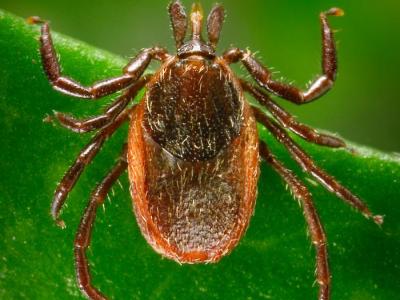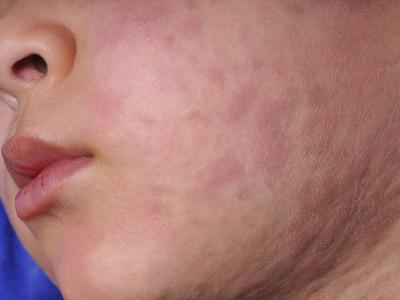Childcare workers left out of state COVID vaccine mandates for teachers
Fewer than half of US states requiring COVID-19 vaccination or routine testing of schoolteachers included childcare professionals in their mandates, leaving some young children vulnerable to infection by unvaccinated caregivers, according to a study yesterday in JAMA Pediatrics.
Yale University researchers reviewed official archives of COVID-related executive orders for all 50 states and Washington, DC, as well as state COVID-19 databases, as of Nov 1, 2021.
Eleven states, including Washington, DC, had issued executive-branch requirements for either COVID-19 vaccination or routine testing for schoolteachers, and only five of them included childcare workers. No states issued such directives for childcare professionals alone or passed laws requiring COVID-19 vaccination.
Three states mandated COVID-19 vaccination for schoolteachers, with no routine testing alternative, while seven accepted either vaccination or routine testing, and one mandated routine testing with opt-out vaccination for those seeking to avoid weekly testing.
Six states didn't identify any vaccination exemptions, while the rest allowed medical or religious exemptions, or both. All states mandated formal proof of vaccination as healthcare provider attestation, signed Centers for Disease Control and Prevention vaccination card, or entry in a state immunization registry.
The findings, the researchers said, suggest an unwarranted disparity in the vaccination of schoolteachers and childcare workers. "Several arguments favor vaccinating childcare professionals," they wrote. "First, both staff and children in childcare programs may be at higher risk for contracting COVID-19 than those in schools, because very young children are currently ineligible for vaccination and possibly less adherent to nonpharmaceutical interventions (eg, masking, social distancing)."
Also, childcare professionals have lower COVID-19 vaccine rates than schoolteachers (78% vs 90% as of late spring 2021), the authors noted. "Third, childcare professionals are disproportionately more racial and ethnic minority individuals, and therefore may be at greater risk for COVID-19–related morbidity and mortality (17.3% and 19.3% are Black and Hispanic individuals vs 12.1% and 13.0% of school personnel, respectively)," they wrote.
The five states that mandated childcare worker COVID-19 vaccination, testing, or both, show that this approach is feasible, they added. "States should consider expanding directives to include childcare professionals to bridge the COVID-19 vaccination gap between childcare professionals and schoolteachers," the researchers concluded.
Feb 28 JAMA Pediatr research letter
Stewardship package linked to fewer antibiotics for dogs, cats
Implementation of a comprehensive antimicrobial stewardship (AMS) package at 135 general-practice veterinary clinics in Australia resulted in a decline in overall antimicrobial use and a shift towards use of low-importance antimicrobials, researchers reported last week in JAC-Antimicrobial Resistance.
The clinics were enrolled in the implementation trial in October 2018 and assigned to one of three levels of an antimicrobial stewardship program: a control group that received education only (CON), an intermediate group (AMS1), and an intensive group (AMS2).
AMS1 and AMS2 clinics were asked to appoint a stewardship champion to lead implementation of the ASP and to color-code antimicrobials according to their importance, and AMS2 clinics were required to restrict use of antimicrobials with a high-importance rating. To evaluate the impact of the three AMS levels, researchers analyzed antimicrobial prescribing data from October 2016 through October 2020.
In the pre-trial period (October 2016 through September 2018), the overall incidence rate (IR) of antimicrobial prescribing for dogs and cats was 3.7 per 1,000 consultations. During the implementation period, the IR of antimicrobial prescribing fell 36% from the pre-trial period to 2.4 per 1,000 consultations, then declined to 1.9 per 1,000 consultations in the post-implementation phase—a 50% decline from the pre-trial period.
Compared with the CON clinics, AMS2 clinics saw a 4% and 6% decrease in the IR of overall antimicrobial prescribing during the implementation and post-implementation periods. They also saw a 24% decline in the IR of high-importance antimicrobial prescribing in both periods compared with CON clinics. A greater mean difference in the IR of antimicrobial prescribing was seen in high-prescribing clinics.
"In conclusion, we have shown a positive impact of three different AMS programmes in a large group of general veterinary practices, resulting in both a decline in overall antimicrobial use and a shift in use towards prescribing of low-importance antimicrobials, with the greatest impact seen in high-prescribing clinics," the study authors wrote. "Further research is needed to evaluate the experience of veterinarians involved in the trial and to investigate the impact that these interventions may have in practices that see horses and/or food production animals in addition to dogs and cats."
Feb 25 JAC-Antimicrob Resist study
Infant formula recall expands following another infant death
The maker of infant formula tied to Cronobacter sakazakii and Salmonella Newport infections, one of them fatal, has expanded its recall after receiving a report that a second baby has died after consuming the company's products.
Abbott Nutrition said the expanded recall now includes one lot of Similac PM 60/40, which was made at the Sturgis, Michigan, facility that made the two other powered formulas that were recalled on Feb 17.
The company said it took the action after learning of the death of an infant who tested positive for Cronobacter sakazakii and had been fed with Similac PC 60/40 from the recalled lot. It said the case is under investigation, but so far, the source of the baby's infection hasn't been determined. "We want to extend our heartfelt sympathies to the family," Abbott said in a statement.
It added that routine testing at the Sturgis facility identified C sakazakii in non-product contact areas. Abbott also said testing on retained products from three patients with Cronobacter were negative, as was product testing for Salmonella from the baby who had a Salmonella Newport infection.
Feb 28 Abbott press release
Feb 18 CIDRAP News scan














